I must apologize for the long periods between posts this year. With the continued pandemic, economic uncertainty and second lockdown, most rail and accessibility-related news recently has been incredibly disappointing. Even positive news such as completed Crossrail stations and the upcoming Northern Line Extension is tempered by the underhand funding cut to the DfT’s railway budget , the indefinite postponement of Crossrail 2, and lack of funding for the Western Rail Link to Heathrow. Under the current circumstances, it almost feels inevitable that accessibility works will continue to be postponed and delayed, while incredibly, level boarding will even be decreased in one instance.
Crossrail Core Update
The long-delayed Crossrail megaproject is back on the news with renewed funding and new completion milestones. After weeks of uncertainty surrounding TfL’s finances and Crossrail’s rising costs, the Government ultimately agree to loan £825 million to TfL to ensure that the Elizabeth Line has enough funding for its completion. As frustrating as the seemingly endless delays and additional costs may be, the project is indeed moving forward, as best shown by the news that Farringdon station is now substantially complete.
Now that it has reached the T-12 landmark, which means the station could be handed back to TfL within 12 weeks, we will begin to see the steady progress of the remaining Crossrail core stations as well as the trial running of the Elizabeth Line, with Paddington station rumored to reach this stage in the coming weeks. This stage of completion, which takes place approximately one year before the planned launch of the Elizabeth Line in late 2021/early 2022, brings up important questions surrounding the launch of step-free access routes to existing TfL lines at these stations.
As I’ve mentioned before, the Crossrail project was a great opportunity to bring step-free access to many existing platforms along the Crossrail route. Due to the nature and funding of these projects, the works at Bond Street and Tottenham Court Road have already allowed for access to the Jubilee, Central, and Northern line platforms at these stations, as these works were physically separate from the main construction of the Crossrail stations. However, for the Bakerloo line at Paddington, the Met/Circle/Hammersmith & City and Northern lines at Moorgate, the Overground and District/Hammersmith & City lines at Whitechapel, and the westbound platform at Barbican, the step-free access works are much more closely tied to the overall Crossrail station construction.
So now, as stations and step-free routes are completed, the big question is whether TfL is willing to open the new stations before the big launch of the Elizabeth line and allow for improved step-free access, or whether it decides to keep all the new stations fully closed to save costs or not spoil the full unveiling. I hope that some of these routes are opened earlier, as they will show that accessibility is important to TfL and will be source of positive news after years of setbacks.
Outer Crossrail
The only constant these days seems to be the slow but steady works being done on the 6 remaining Crossrail West stations (Acton Main Line, Ealing Broadway, West Ealing, Southall, Hayes & Harlington, and West Drayton) and the single inaccessible Crossrail East station, Ilford. As the new Crossrail newsletter shows, the works in the West are progressing with the installation of lifts and the steelwork for new station buildings throughout the route . Acton Main Line appears to be the next station that will gain step-free access, while other stations like Southall still require significant construction.

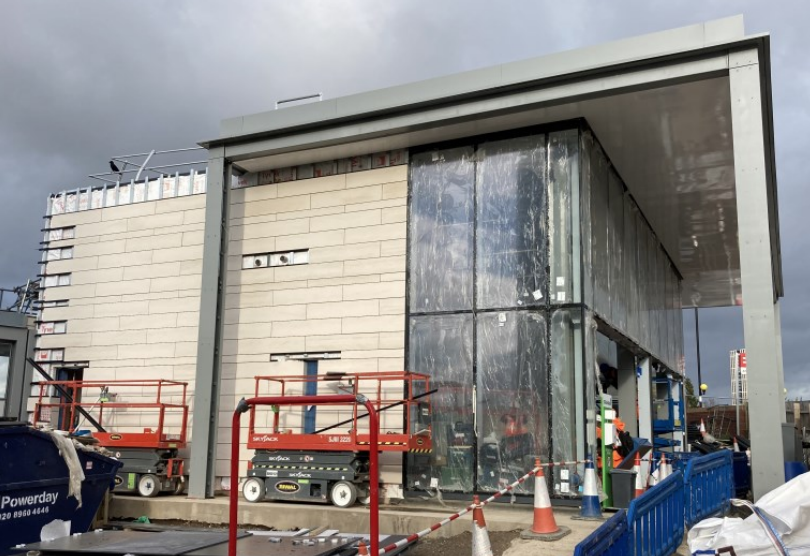
Ilford is also in an advanced state of construction, as the pictures below show, and all the stations are expected to be completed during 2021 according to Crossrail Ltd. With any luck, by the time the Elizabeth Line starts running, all of the stations on the full route will have step-free access to platforms.
Crossrail 2 Delay and Northern Line Extension
Unfortunately, given the overall upheaval at TfL, Crossrail 2 is the biggest loser in the new financial settlement between TfL and the Government, as not only has the DfT told TfL to shelve the project, but part of the funding scheme for Crossrail 2, the Business Rate Supplement and Mayoral Community Infrastructure Levy, will already be used to pay back the Crossrail loans. And so, unless significant investment is given to TfL in the near future, we can forget about Crossrail 2 in the short-term.
Alongside Crossrail, the only other expansion project that has not been shelved is the Northern Line Extension to Battersea Power Station. Currently on track to be opened by next autumn, the two-station extension will feature full level boarding accessibility.
Loss of Level Boarding at Heathrow
On the subject of level boarding, it appears that the UK’s stubborn habit of creating level boarding at non-standard platform heights is coming back to bite them. The Heathrow Express platforms at Paddington and at the three Heathrow Airport stations have been built above the 915 mm standard platform height since the start of the service in 1998 in order to allow for level boarding for the class 332 train fleet. However, now that these trains are being replaced by class 345 trains, for the Elizabeth Line, and class 387 trains, for the Heathrow Express, the differences in the platform-train interface (PTI) between the old and new trains now mean that manual boarding ramps will be required for those requiring step-free access. Essentially, the new arrangement manages to worsen accessibility at the four stations while offering no benefits with regards to platform or train standardisation. A possible solution would be to modify the platforms to fit the new trains. However, is it not clear whether there is funding available for this, and it seems quite incredible that a non-standard platform would be replaced with another non-standard one. This issue is covered at length in the Hyde Park Now blog.
This represents a very clear warning to the Elizabeth Line, which will have non-standard level boarding in the core section of the route and manual boarding ramps elsewhere, as this means that future rolling stock may not be compatible with the raised platforms and platform screen doors, requiring prohibitively expensive alterations. Of course, all of this could have been avoided if the Heathrow Express stations and the new Elizabeth Line stations had been constructed at the standard height and the trains had allowed for level boarding at this height. Instead, we now have a mixture of relatively new platform heights that will only serve to hold widespread level boarding back for decades. It will be interesting to see if Heathrow is ultimately left without level boarding indefinitely, and when TfL will acknowledge this after showing a level boarding designation for these stations in all available maps.
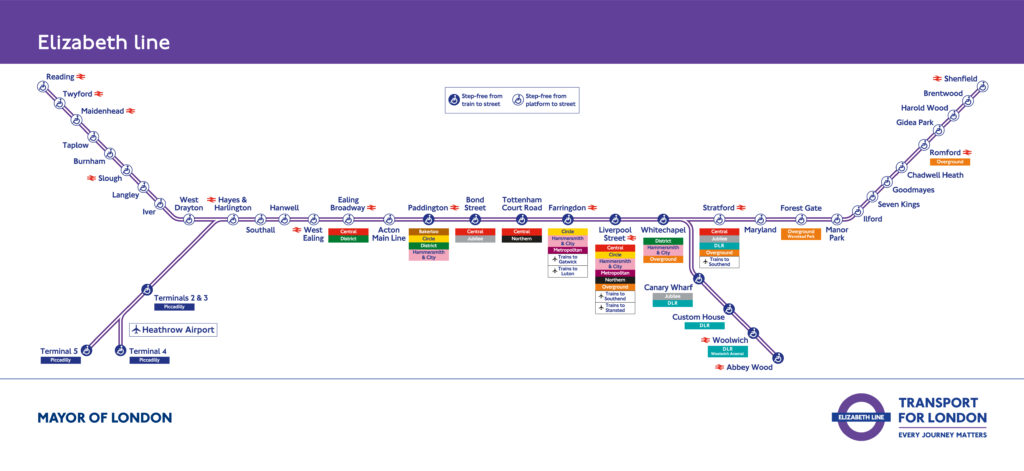
Adding to the Heathrow chaos, the long-awaited Western Rail Link to Heathrow, linking the Great Western Main Line to Heathrow Airport from the west, has been delayed by several years and will not start construction until 2024. This link would allow for much easier access to the airport by rail and encourage public transport use.
Away from London, the transport situation is similarly grim, with few bright spots among a series of disappointing developments, including further cuts and delays.
More Flights, Fewer Trains?
In a highly counterproductive move, the third runway at Heathrow Airport will now be going ahead, following the latest Supreme Court ruling. From a climate emergency perspective, the last thing we need is to promote short haul flights, and as a further kick to the teeth, the eastern leg of HS2’s Phase 2B is under in danger of being scrapped following the latest suggestions from the National Infrastructure Commission (NIC). For all the anti-HS2 complaints that HS2 would lead to increased aviation because of the proximity of HS2 stations to airports in Manchester and Birmingham, now we may end up with much more domestic flights and a lack of further rail capacity in the East Midlands and Yorkshire. If this country is serious about tackling the climate emergency, it must prioritize sustainable transport and understand that HS2 is the best way to allow regional and local rail network upgrades.
Level Boarding Stadlers
Surprisingly, the Government is now openly acknowledging the transformative benefits of level boarding trains at the national platform height. In a recent Parliament Transport Committee meeting, Minister of State for Railways Chris Heaton-Harris highlighted the work of the new Stadler trains (class 755 and 745), which use retractable steps to enable level boarding at the standard 915 mm high platforms. This is very encouraging as it shows that the DfT realises that this approach (using trains with lower floors and with retractable steps) works and should be replicated.
Indeed, the Greater Anglia Stadler trains have been a marked improvement on accessibility, but there are still glaring issues surrounding the standardisation of platforms. As Geoff Marshall’s video below shows, not all platforms allow for level boarding to the Stadler trains due to a wide variation in platform heights for historical reasons.
This means that even with the right trains, the second part of the solution is ensuring that the platforms are standardised. Annoyingly, Greater Anglia has refused to create a map that shows which platforms allow for level boarding.
Quite simply, this is incredibly misguided. If 70% of the platforms on the Stadler routes allow for level boarding, would anyone be willing to chance it without knowing if a destination has level boarding? Under this scenario, for a new user, the whole network still needs ramp assistance, which completely defeats the point of the improved accessibility.
Thameslink on the Tube Map
On a more positive map-related note, TfL has finally agreed to (temporarily) add the Thameslink service to its official Tube Map. This has long been an obvious choice, especially due to Thameslink’s level boarding stations in Central. Surprisingly, instead of just including the central portion of the network, TfL have even added the long suburban branches, making a big impact on the look of the Tube Map, pictured below.
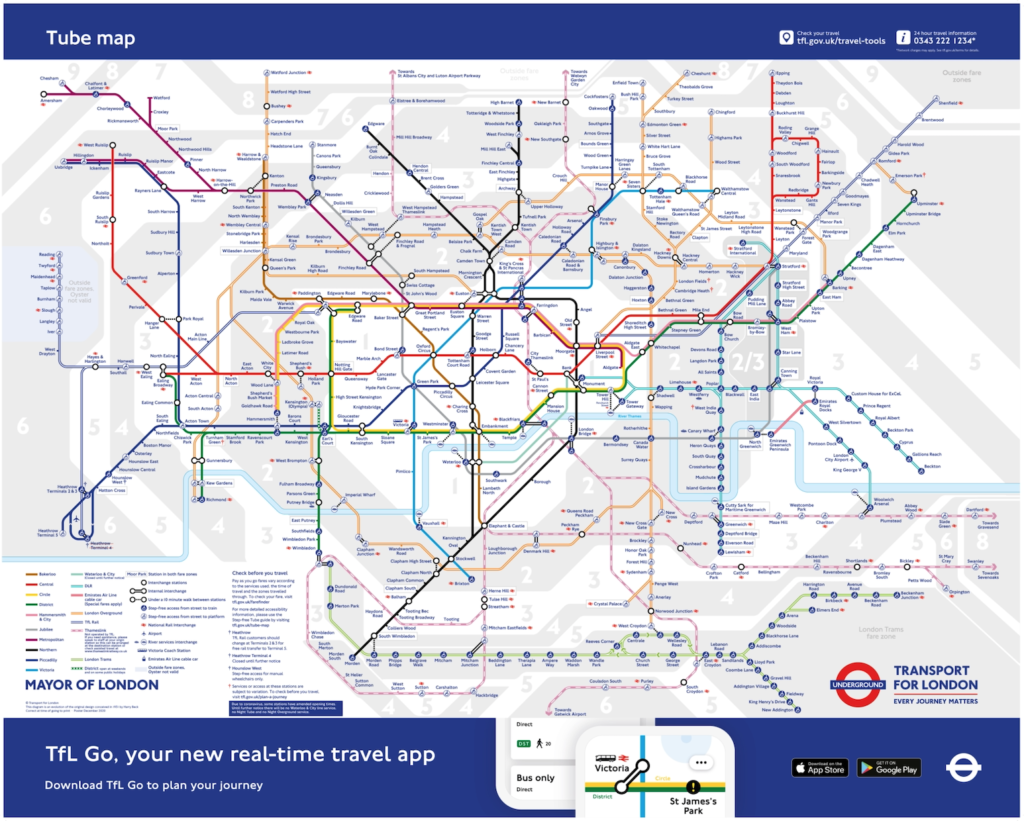
In typical TfL fashion, this positive development also includes inaccurate information surrounding the accessibility at King’s Cross St Pancras. While it is true that some southbound Thameslink services terminate at King’s Cross where the platforms do not have level boarding, all services that use the low-level St Pancras International platforms have level boarding, so it is wrong to label the whole service as not having level boarding at this station. I hope this will be fixed, as the entire point of Thameslink’s inclusion is to make it easier to travel across London. Maybe they should take a look at the Step Free London map (they’ve used it for inspiration before)!
“Green” “Recovery”?
Finally, as a cherry on top of what has been an abysmal year for public transport, we can now expect an above-interest 2.6% rise in rail fares starting in March , despite the fact that the economy has tanked and wages are virtually stagnant. Apparently, shelving dozens of rail projects, decreasing the DfT budget for rail enhancements by £1bn , and prioritizing air travel isn’t ruinous enough for the rail industry, so now we can probably expect an even slower recovery as rail travel becomes less affordable, while private transport and aviation pick up the slack. At a time when ”green” investment is fashionable, it is unconscionable that the rail industry should be abandoned in this way. I hope that once the pandemic is over, this Government will take a sharp turn and commit to properly funding our transport network, including all the necessary work to make it as accessible and inclusive as possible.
I probably will not post until the new year, when there is enough further news (hopefully positive) to warrant it. I wish you all Happy Holidays and hope you all stay safe!
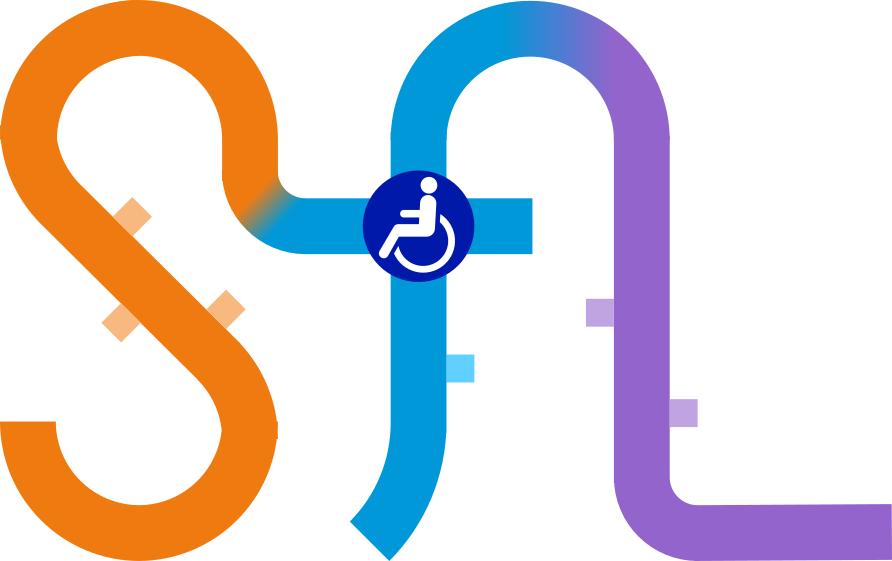
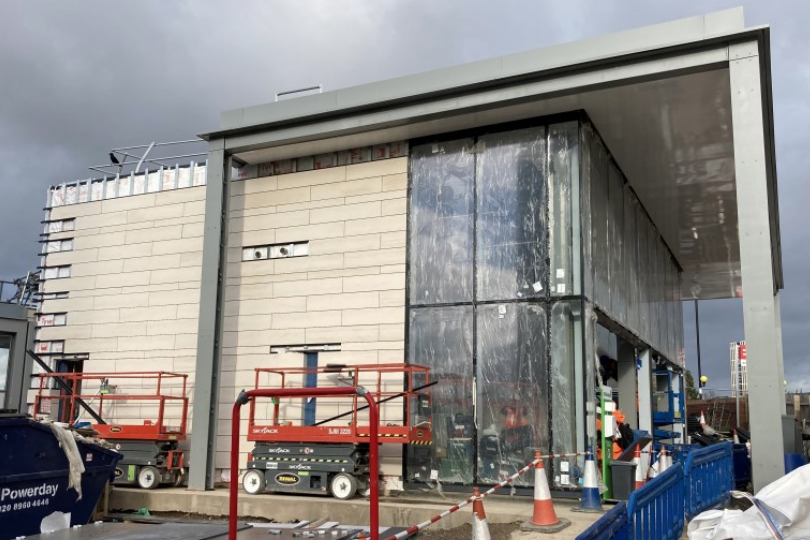

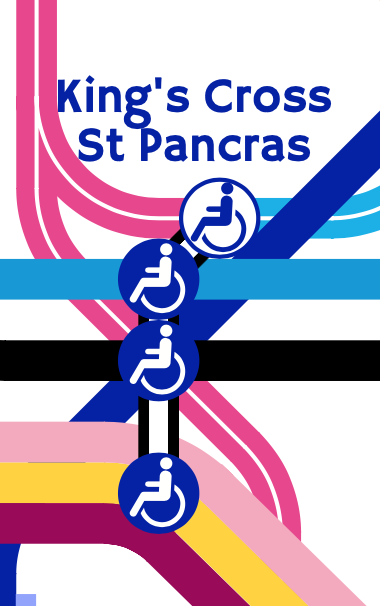
A tiny piece of positive news re station access in that TFL have issued compulsory purchase order for land needed for new entrance to Surrey Quays Station which will include lifts to make the station accessible. See –
https://www.ianvisits.co.uk/blog/2020/12/22/tfl-issues-compulsory-purchase-order-to-expand-surrey-quays-station/
According to the Olympic Park newsletter a temporary second entrance to Hackney Wick station has opened on Wallis Road (will eventually be replaced by a permanent one) which should provide quicker and better access to the park. It’s described as “flat level” so presumably reasonably accessible.
wow thats interesting, especially since there was recently a lot of work to make this station accessible. Good to see they are putting additional entrances.
Completing the Elizabeth Line issued December 2020 –
https://2577f60fe192df40d16a-ab656259048fb93837ecc0ecbcf0c557.ssl.cf3.rackcdn.com/assets/library/document/c/original/completeing_the_elizabeth_line-18_december_2020.pdf
Crossrail West Newsletter December 2020-
https://2577f60fe192df40d16a-ab656259048fb93837ecc0ecbcf0c557.ssl.cf3.rackcdn.com/assets/library/document/w/original/west_stations_newsletter_december_2020.pdf
https://2577f60fe192df40d16a-ab656259048fb93837ecc0ecbcf0c557.ssl.cf3.rackcdn.com/assets/library/document/w/original/west_stations_newsletter_january_2021.pdf
Crossrail West Newsletter January 2021
It looks more positive with stations approaching completion including Ealing Broadway which includes central and district lines
http://content.tfl.gov.uk/alison-moore-montly-update-18-january-2020.pdf
January 2021 Monthly Update from Mark Wild re Crossrail progress. Details of progress re step free access are towards the end of the letter.
Access for All scheme at St Mary’s Cray Station, Kent gets underway. Please see Network Rail press release below-
https://www.networkrailmediacentre.co.uk/news/gbp-4m-step-free-access-work-starting-at-st-mary-cray-station
After all the silence, any news of Access for All is a blessing!
https://m.youtube.com/watch?v=snYHvZMRLlA&feature=youtu.be&fbclid=IwAR1njpxqSwUsXaymLoxlGVCZ_ER-_KW_wYsMqX00NFrKp01UsNE4E98YPmc
Video of Progress on Elizabeth Line – West ( January 2021)
Video is from above and shows stations and layout of lifts re platforms.
London Underground gets council approval for new entrance to Walthamstow Central Station which includes lift for step free access see link below-
https://www.ianvisits.co.uk/blog/2021/01/29/london-underground-gets-approval-for-walthamstow-central-tube-station-upgrade/
Amersham works are almost done! It could open anytime soon. Here are some pics from a districtdave forum member:
https://districtdavesforum.co.uk/thread/31783/step-free-works-cancelled?page=1&scrollTo=499904
Proposal to future proof Elephant and Castle Station for a future Bakerloo Line diversion and extra escalators and lift access from the new Northern Line entrance. See-
https://www.ianvisits.co.uk/blog/2021/02/02/changes-for-elephant-castle-tube-station/
GOOD NEWS! Amersham is now step-free! https://districtdavesforum.co.uk/post/499925/thread
News on TFL Site that Amersham Station. Has become Step Free –
https://tfl.gov.uk/info-for/media/press-releases/2021/february/amersham-becomes-london-s-81st-step-free-underground-station
Contained within announcement is information that Metropolitan Line will have level access with ramps for National Rail trains –
Level access between the train platform for Metropolitan line services and a manual boarding ramp will be available to assist customers wishing to access National Rail trains that stop at Amersham.
Perhaps it’s time for TFL to decide which services should have level access at stations served by different train types and at least make level access where possible with one type.?
personally I think the sub-surface lines should be prioritised, especially along the Uxbridge line
I wonder if all of this level boarding delay is caused by the domino effect of indecisiveness and the need to upgrade the Piccadilly line before implementation? I still do not understand why they did not add step-free access provision at Rayners Lane either. Although we do know now that Amersham will have way more patronage with a stairless footbridge and lifts.